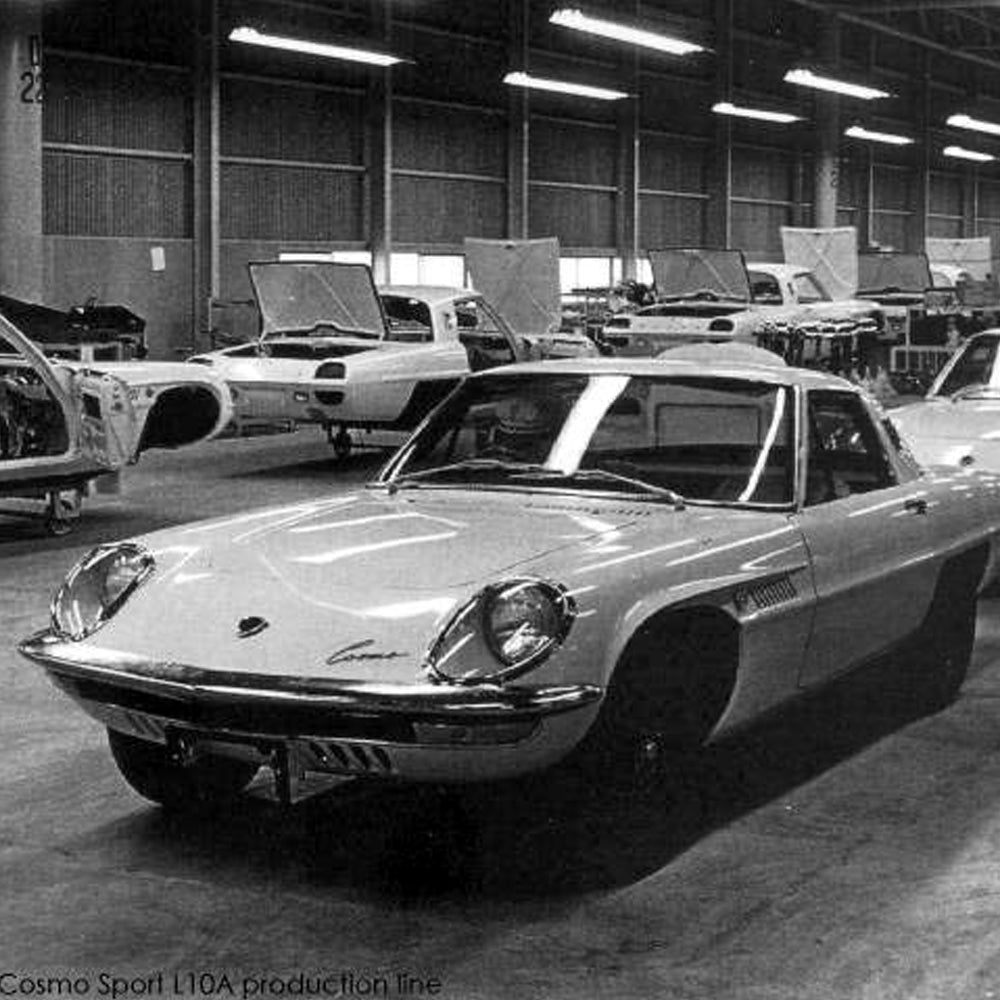I don’t think I’ve ever been shy in sharing my enthusiasm for the slightly off-kilter side of this hobby. From Opron-era Citroëns and streamlined Tatras to two-stroke Saabs and orphan supercars like the EB110, if it’s a little bizarre and rests on four wheels, then it’s clearly for me. Perhaps (certainly) because of my predilection for the weird, I’ve always held a strong fascination for Wankels—the spinning triangles of financial doom. Aside from their innate strangeness, I love their simplicity, compactness, high power to displacement ratio, willingness to rev, otherworldly smoothness of operation, and of course, their four-million pissed-off bumble bee at the end of summer soundtrack—their propensity for flamethrowing is also pretty rad.
Mazda, at least until very recently, long shared my love of the rotary, having purchased the rights to develop it from NSU in 1961. After six years of further development, their first rotary-powered car was revealed to the world, called the Cosmo 110S. Envisioned as a halo model for the entire brand, the Cosmo was genesis for every rotary engined car ever to roll out of Hiroshima, a steadily flowing stream that eventually slowed to a trickle, drying up completely in 2012 as the RX-8 reached the end of its production run.



Styling was a mish mash of American and European ideas prevalent at the time, yet the finished whole was somehow only identifiable as distinctly Japanese. Though released to market in 1967, development actually began immediately after Mazda first gained the rights to develop its rotary heart, with prototypes running the test circuit as early as 1963—incredibly futuristic stuff for a world still run by vacuum tubes, let alone for Japan, who were still very busy clawing their way back from the utter devastation of WWII.
Hand built at a rate of about one a day, only 1,519 were made during a six year run ending in September of 1972, making it one of the rarest and most collectible of all classic Japanese cars, perhaps bested here only by the gorgeous Toyota 2000GT. Built in two distinct series, the first ended a mere 14 months into production in July of 1968.
Both cars used twin rotor engines displacing 982 CC, with series I cars capable of 110 HP, while series II examples made about 20 HP more. The biggest difference between series was the second version’s adaptation of a wheelbase a scarcely believable 15 inches longer than its predecessor’s—miraculously, the largely unchanged styling was still proportional, it remained a very pretty car. Other improvements to the series II included fitting a five speed in place of the earlier car’s four cog box, as well as power assistance for its four wheel discs. Suspension remained unchanged with an A-arm/coil spring front and De Dion rear.
The Cosmo continued on for a further three generations, ending with the utterly mad twin turbo, triple rotor MKIV model which was built from 1990-95—10 MPG HWY was the official fuel economy figure… It was never sold here, nor was the MKIII, but several thousand MKIIs, which looked like something like a Bizarro World ¾ scale Ford Granada, were. Along with the half dozen or so series II MKI Cosmos we were lucky enough to receive, very few remain—in fact, I’ve seen one of each in a lifetime of seeking out odd cars, the past ten years of which has been in Southern California. The MKI was spotted at Mazda’s US headquarters in Irvine, south of Los Angeles (the home of Cars & Coffee), its successor a low-mileage, beautifully-preserved example for sale by the original old lady owner, as seen on her driveway. It literally needed nothing, which is almost exactly what she wanted for it. My biggest automotive regret is that I didn’t buy it—it was weird, it was ugly, it was spectacular. Long live the weirdos.






Image Sources: museumvictoria.com.au, autofrei.wordpress.com, 2000gt.net




















































